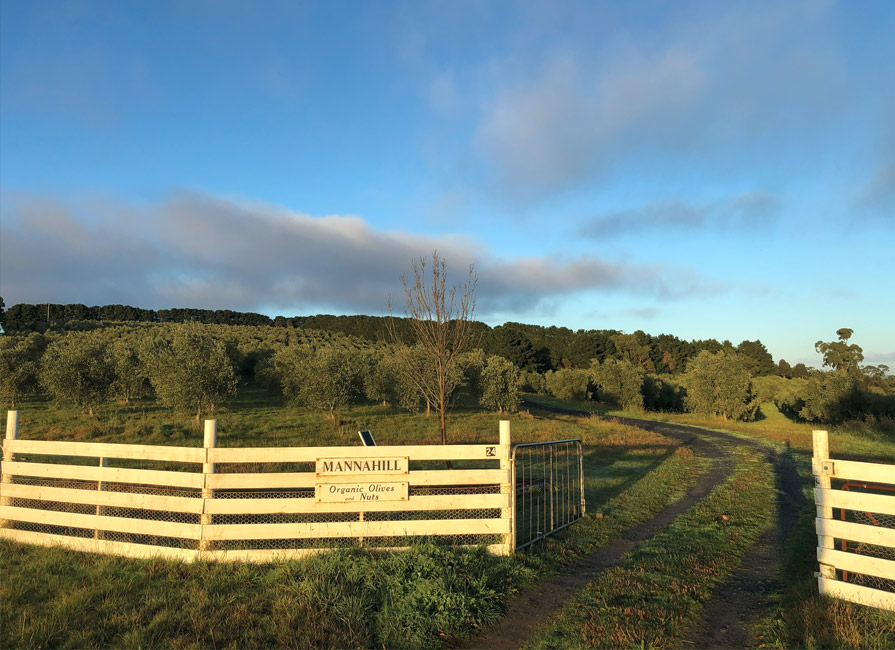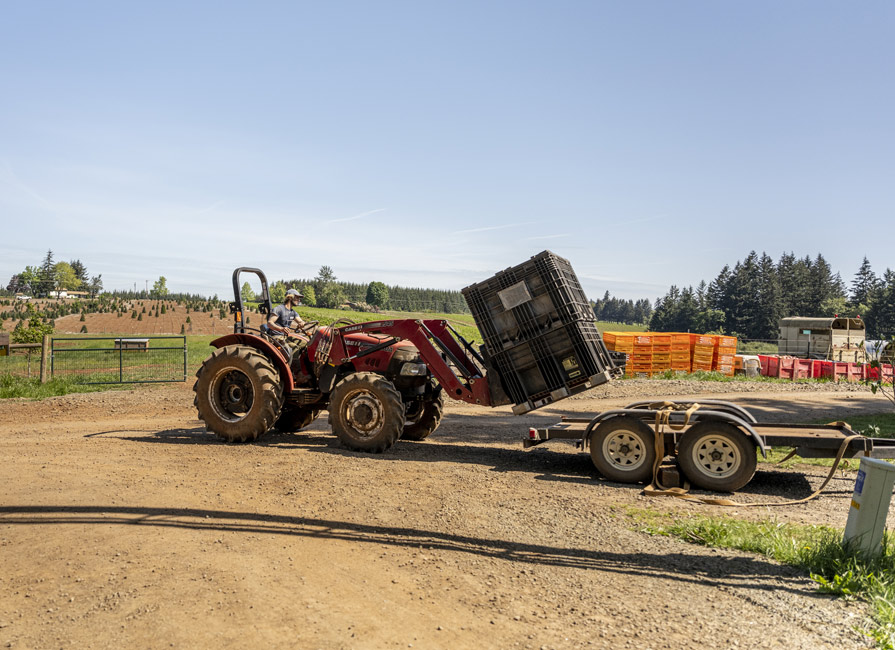One of the key attractions of our Certified Regenerative by AGW program is its practical…

Grove New World
Humans have grown olives in the Mediterranean for thousands of years—probably since the start of agriculture over 10,000 years ago. Today, they are grown commercially in similar climates worldwide, including California, Argentina, Australia, and South Africa.
Despite being hardy, olive trees have specific requirements for successful production. They thrive in well-drained, neutral to slightly alkaline soils but struggle with high humidity, especially in summer. While they tolerate extreme temperatures, deep frosts can cause significant losses.
Olive trees require temperatures of 15–20°C (59–68°F) and humidity below 60% for successful pollination. They need adequate but not excessive moisture to set fruit, as well as reasonable levels of nitrogen—too much encourages leaf growth, while too little prevents fruiting.
Rainfall during the two-week pollination period in spring or early summer can hinder fruit set, making dry conditions essential. The fruit matures over six months, with harvest typically in autumn or early winter, often using mechanical shakers or over-the-row harvesters.
A changing climate
Historically, the cool, wet winters and hot, dry summers here at Manna Hill Estate have provided ideal conditions for olive growing, similar to the Mediterranean.
Over the past 30 years, however, the climate has changed dramatically. As early as the 1990s, scientists warned of shifting weather patterns: more summer rain, drier winters, lower annual rainfall, and more extreme weather events, including intense storms, hail, and stronger winds. Unfortunately, they were right—and things are likely to get worse.
We planted our dryland grove in 2002, just as the ‘Millennium Drought’ began—one of Australia’s most severe and prolonged droughts ever recorded. For the next eight years, rainfall was well below the average 720mm (28 inches), with consecutive years barely reaching 50%. Shade temperatures often exceeded 40°C (104°F), and some days hit 47°C (116°F). The young trees survived with careful management but struggled to thrive, delaying commercial production from three years to ten. Our first harvest finally came in 2012—only for another to be wiped out by a freak hailstorm in 2016.
Extreme weather events have continued. In 2022, we experienced two “one-in-100-year” windstorms within 10 weeks, with gusts reaching 146 km/h (90 mph). In 2023, it rained for all but four days of the pollination period, reducing fruit set by 80%. The La Niña years (2021–2023) brought warm, humid conditions, fueling outbreaks of peacock spot, a fungal disease that can defoliate and even kill trees. Summer heat usually curbs its spread, but in 2023, we had just five days over 30°C (86°F), and persistent humidity. Our once “traditional Mediterranean climate” is anything but.
A global challenge
Challenges for olive producers extend well beyond our region. In other areas of Australia, some groves were hit by frost, others lost crops to hail, while humid conditions on the East Coast led to outbreaks of olive lace bug. Many groves had too little fruit to harvest. Spain, the world’s largest olive producer, has also suffered major drought-related losses in recent years, as did other Mediterranean countries.
But farmers are resilient. During recent heavy rain, a neighboring grain farmer who had lost most of his crop was already out with his seeder. His reasoning? If it was wet enough to ruin his crop, it was wet enough to grow a summer one!
Two major human-induced factors drive climate change:
- Greenhouse gas emissions (GHG): These gases trap heat in the atmosphere, warming the planet.
- Landscape degradation: Bare soil absorbs heat and radiates it back, intensifying warming. In contrast, vegetation-rich soil converts sunlight into evapotranspiration, effectively cooling the land. Industrial agriculture, with its reliance on bare soil, acts as a heat source, while GHGs form the insulating blanket.
So far, global efforts have focused almost exclusively on reducing GHG emissions (albeit with little success) while largely ignoring the impact of degraded landscapes. In reality, decreasing vegetation cover and soil organic matter adversely changes our landscape and climate, potentially more so than GHG emissions.
A regenerative approach
Research shows that widespread adoption of regenerative farming can reduce reliance on inputs like fertilizers and pesticides, significantly cutting both fossil fuel use and associated GHG emissions. Regenerative practices also encourage producers to keep soil covered with growing plants year-round, increasing soil carbon sequestration and soil organic matter levels, restoring landscapes, and improving the local water cycle, ultimately resulting in a more climate-resilient system. Rajendra Singh, the so-called ‘Waterman of India’, led a movement in Rhajastan that restored several rivers by increasing local vegetation cover from 2% to 48%, cooling the region by 2°C (35.6°F), and increasing local rainfall. By cutting emissions, increasing carbon sequestration, and regenerating the land, regenerative agriculture can help to mitigate climate change.
Adaptations at Manna Hill
Farmers must develop adaptations to the changing conditions to ensure resilience to extreme weather events. We have implemented several strategies to mitigate key climate impacts.
Frost management
Olive trees suffer damage below -2°C (~30°F) and can die at -10°C (~15°F). Our adaptations include:
- Strategic grove design: Planting on north facing slopes (natural warmth in the southern hemisphere winter) and avoiding frost-prone areas.
- Grove maintenance: Keeping the grass sward low over winter encourages frost to flow downhill between trees rather than reaching the canopy.
- Soil microbial diversity: Research suggests rhizobacteria and mycorrhizal fungi can improve plant stress tolerance, potentially lowering the frost point by 5–6°C (~10°F).
- Seaweed foliar sprays: Products strengthen cell walls, reducing frost and heat damage.
Wind management
Despite the extreme windstorms of 2022, we lost only lost one olive tree. Our wind mitigation measures include:
- Grove design: Planting on north-facing slopes shields trees from extreme winds, which typically come from the south.
- Shelter belts: Planting three-row mixed-species windbreaks (from small bushes to large trees) to slow the wind and provide habitat for pest controlling birds and insects.
- Agroforestry areas: Planting other tree species on southern-facing land and non-harvestable land to provide wind protection for olive groves, grazing livestock, timber, biochar, compost material, and domestic firewood.
Rainfall management
Southeast Australia has experienced record-low winter rainfall alongside extreme rainfall events. On one day, we had 230 mm (9 inches)—about one third of our average annual rainfall—in just 20 minutes. To counteract lower rainfall and increased intensity, we have:
- Grove design: Planted trees using Keyline principles, with mounded rows following contours. Heavy rainfall flows as far as the next row before moving along the contour, improving infiltration.
- Soil improvement: Direct drilled cover crops ensures ground is always covered and mulching and biochar increase soil moisture retention. Soil organic matter (SOM) has doubled to nearly 8%, with infiltration rates exceeding 1,000 mm (3 feet) per hour in some areas.
- Water holding capacity: Increasing SOM increases water retention. The USDA estimates every 1% increase in SOM adds 20,000 gallons/acre (~190,000 L/ha). Our soil water storage capacity has increased by 80,000 gallons/acre (~760,000 L/ha), improving drought resilience.
- Restoring the local water cycle: Maintaining permanent ground cover enhances local climate stability. In his book, Ground Breaking: Soil Security and Climate Change, Phil Mulvey describes how large regenerative farms can influence local weather, forming “square clouds” that drive rainfall. While we are not at that scale, widespread adoption could help mitigate climate change regionally.
Author: Campbell Mercer manages Manna Hill Estate, a family-run, dryland olive grove near Mount Egerton in Victoria’s Central Highlands. Established in 2001, the estate spans 90 acres, with 25 acres dedicated to 2,500 olive trees. The farm produces award-winning extra-virgin olive oil, table olives, soaps, and skincare balms. In 2023, Manna Hill Estate became the world’s first commercial olive grove to be Certified Regenerative by A Greener World.
Originally published in the Spring 2025 issue of AGW’s Sustainable Farming magazine.


